Osamu Yoshie
DM$^3$Net: Dual-Camera Super-Resolution via Domain Modulation and Multi-scale Matching
Jun 08, 2025Abstract:Dual-camera super-resolution is highly practical for smartphone photography that primarily super-resolve the wide-angle images using the telephoto image as a reference. In this paper, we propose DM$^3$Net, a novel dual-camera super-resolution network based on Domain Modulation and Multi-scale Matching. To bridge the domain gap between the high-resolution domain and the degraded domain, we learn two compressed global representations from image pairs corresponding to the two domains. To enable reliable transfer of high-frequency structural details from the reference image, we design a multi-scale matching module that conducts patch-level feature matching and retrieval across multiple receptive fields to improve matching accuracy and robustness. Moreover, we also introduce Key Pruning to achieve a significant reduction in memory usage and inference time with little model performance sacrificed. Experimental results on three real-world datasets demonstrate that our DM$^3$Net outperforms the state-of-the-art approaches.
PADriver: Towards Personalized Autonomous Driving
May 08, 2025Abstract:In this paper, we propose PADriver, a novel closed-loop framework for personalized autonomous driving (PAD). Built upon Multi-modal Large Language Model (MLLM), PADriver takes streaming frames and personalized textual prompts as inputs. It autoaggressively performs scene understanding, danger level estimation and action decision. The predicted danger level reflects the risk of the potential action and provides an explicit reference for the final action, which corresponds to the preset personalized prompt. Moreover, we construct a closed-loop benchmark named PAD-Highway based on Highway-Env simulator to comprehensively evaluate the decision performance under traffic rules. The dataset contains 250 hours videos with high-quality annotation to facilitate the development of PAD behavior analysis. Experimental results on the constructed benchmark show that PADriver outperforms state-of-the-art approaches on different evaluation metrics, and enables various driving modes.
R1-T1: Fully Incentivizing Translation Capability in LLMs via Reasoning Learning
Feb 27, 2025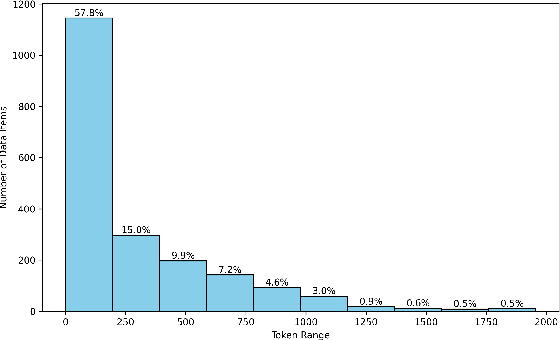



Abstract:Despite recent breakthroughs in reasoning-enhanced large language models (LLMs) like DeepSeek-R1, incorporating inference-time reasoning into machine translation (MT), where human translators naturally employ structured, multi-layered reasoning chain-of-thoughts (CoTs), is yet underexplored. Existing methods either design a fixed CoT tailored for a specific MT sub-task (e.g., literature translation), or rely on synthesizing CoTs unaligned with humans and supervised fine-tuning (SFT) prone to catastrophic forgetting, limiting their adaptability to diverse translation scenarios. This paper introduces R1-Translator (R1-T1), a novel framework to achieve inference-time reasoning for general MT via reinforcement learning (RL) with human-aligned CoTs comprising six common patterns. Our approach pioneers three innovations: (1) extending reasoning-based translation beyond MT sub-tasks to six languages and diverse tasks (e.g., legal/medical domain adaptation, idiom resolution); (2) formalizing six expert-curated CoT templates that mirror hybrid human strategies like context-aware paraphrasing and back translation; and (3) enabling self-evolving CoT discovery and anti-forgetting adaptation through RL with KL-constrained rewards. Experimental results indicate a steady translation performance improvement in 21 languages and 80 translation directions on Flores-101 test set, especially on the 15 languages unseen from training, with its general multilingual abilities preserved compared with plain SFT.
RoboMatrix: A Skill-centric Hierarchical Framework for Scalable Robot Task Planning and Execution in Open-World
Nov 29, 2024Abstract:Existing policy learning methods predominantly adopt the task-centric paradigm, necessitating the collection of task data in an end-to-end manner. Consequently, the learned policy tends to fail to tackle novel tasks. Moreover, it is hard to localize the errors for a complex task with multiple stages due to end-to-end learning. To address these challenges, we propose RoboMatrix, a skill-centric and hierarchical framework for scalable task planning and execution. We first introduce a novel skill-centric paradigm that extracts the common meta-skills from different complex tasks. This allows for the capture of embodied demonstrations through a kill-centric approach, enabling the completion of open-world tasks by combining learned meta-skills. To fully leverage meta-skills, we further develop a hierarchical framework that decouples complex robot tasks into three interconnected layers: (1) a high-level modular scheduling layer; (2) a middle-level skill layer; and (3) a low-level hardware layer. Experimental results illustrate that our skill-centric and hierarchical framework achieves remarkable generalization performance across novel objects, scenes, tasks, and embodiments. This framework offers a novel solution for robot task planning and execution in open-world scenarios. Our software and hardware are available at https://github.com/WayneMao/RoboMatrix.
What Do You Want? User-centric Prompt Generation for Text-to-image Synthesis via Multi-turn Guidance
Aug 23, 2024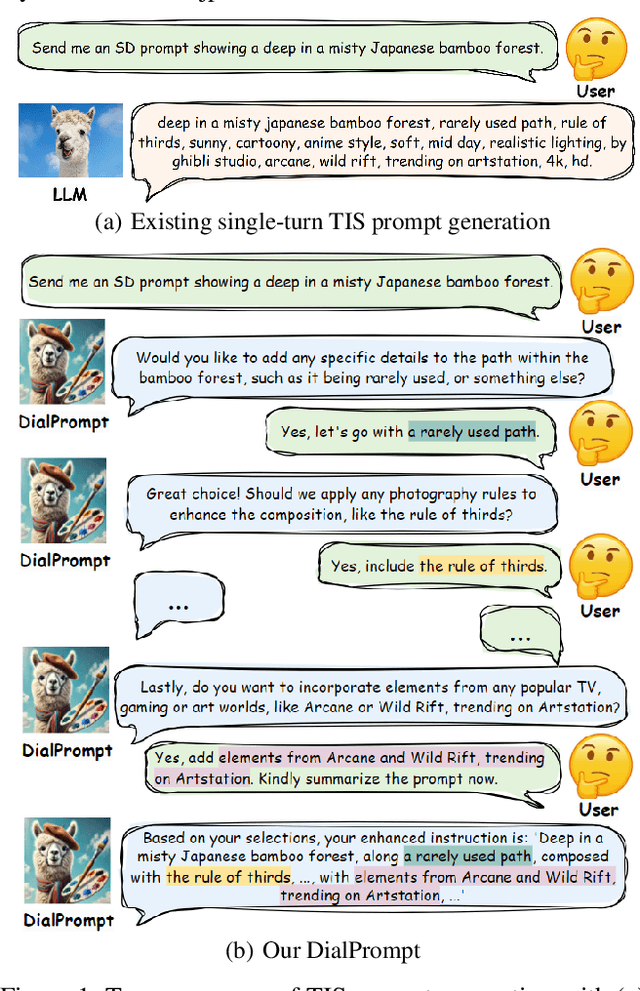
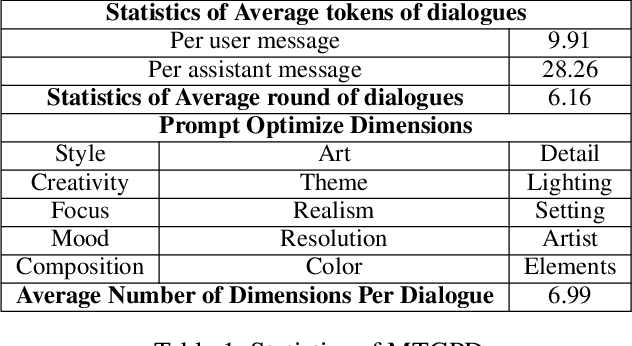
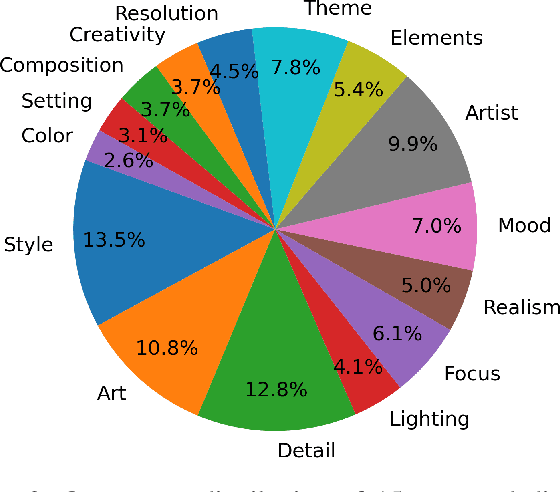
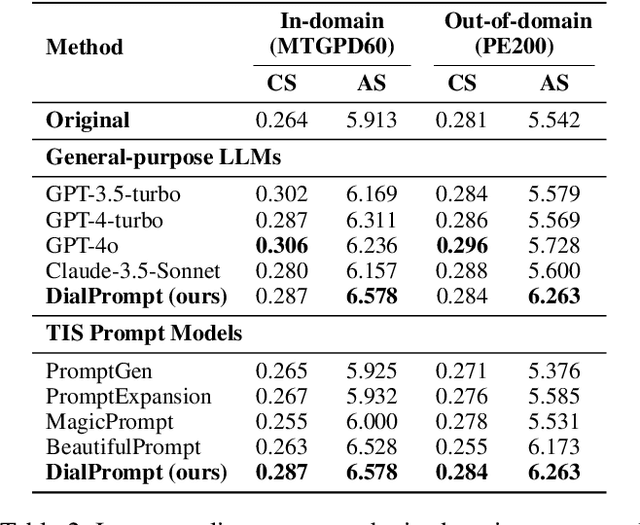
Abstract:The emergence of text-to-image synthesis (TIS) models has significantly influenced digital image creation by producing high-quality visuals from written descriptions. Yet these models heavily rely on the quality and specificity of textual prompts, posing a challenge for novice users who may not be familiar with TIS-model-preferred prompt writing. Existing solutions relieve this via automatic model-preferred prompt generation from user queries. However, this single-turn manner suffers from limited user-centricity in terms of result interpretability and user interactivity. To address these issues, we propose DialPrompt, a multi-turn dialogue-based TIS prompt generation model that emphasises user-centricity. DialPrompt is designed to follow a multi-turn guidance workflow, where in each round of dialogue the model queries user with their preferences on possible optimization dimensions before generating the final TIS prompt. To achieve this, we mined 15 essential dimensions for high-quality prompts from advanced users and curated a multi-turn dataset. Through training on this dataset, DialPrompt can improve interpretability by allowing users to understand the correlation between specific phrases and image attributes. Additionally, it enables greater user control and engagement in the prompt generation process, leading to more personalized and visually satisfying outputs. Experiments indicate that DialPrompt achieves a competitive result in the quality of synthesized images, outperforming existing prompt engineering approaches by 5.7%. Furthermore, in our user evaluation, DialPrompt outperforms existing approaches by 46.5% in user-centricity score and is rated 7.9/10 by 19 human reviewers.
MM-Instruct: Generated Visual Instructions for Large Multimodal Model Alignment
Jun 28, 2024
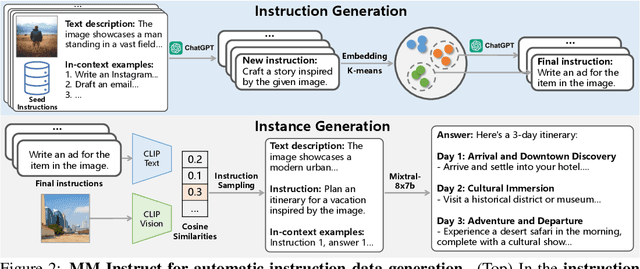
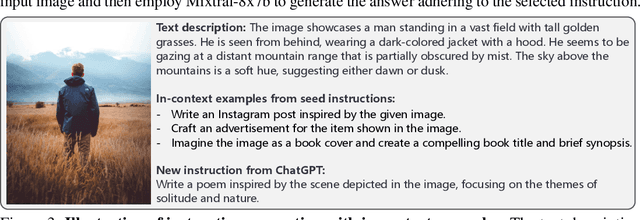

Abstract:This paper introduces MM-Instruct, a large-scale dataset of diverse and high-quality visual instruction data designed to enhance the instruction-following capabilities of large multimodal models (LMMs). While existing visual instruction datasets often focus on question-answering, they struggle to generalize to broader application scenarios such as creative writing, summarization, or image analysis. To address these limitations, we propose a novel approach to constructing MM-Instruct that leverages the strong instruction-following capabilities of existing LLMs to generate novel visual instruction data from large-scale but conventional image captioning datasets. MM-Instruct first leverages ChatGPT to automatically generate diverse instructions from a small set of seed instructions through augmenting and summarization. It then matches these instructions with images and uses an open-sourced large language model (LLM) to generate coherent answers to the instruction-image pairs. The LLM is grounded by the detailed text descriptions of images in the whole answer generation process to guarantee the alignment of the instruction data. Moreover, we introduce a benchmark based on the generated instruction data to evaluate the instruction-following capabilities of existing LMMs. We demonstrate the effectiveness of MM-Instruct by training a LLaVA-1.5 model on the generated data, denoted as LLaVA-Instruct, which exhibits significant improvements in instruction-following capabilities compared to LLaVA-1.5 models. The MM-Instruct dataset, benchmark, and pre-trained models are available at https://github.com/jihaonew/MM-Instruct.
BreakGPT: A Large Language Model with Multi-stage Structure for Financial Breakout Detection
Feb 12, 2024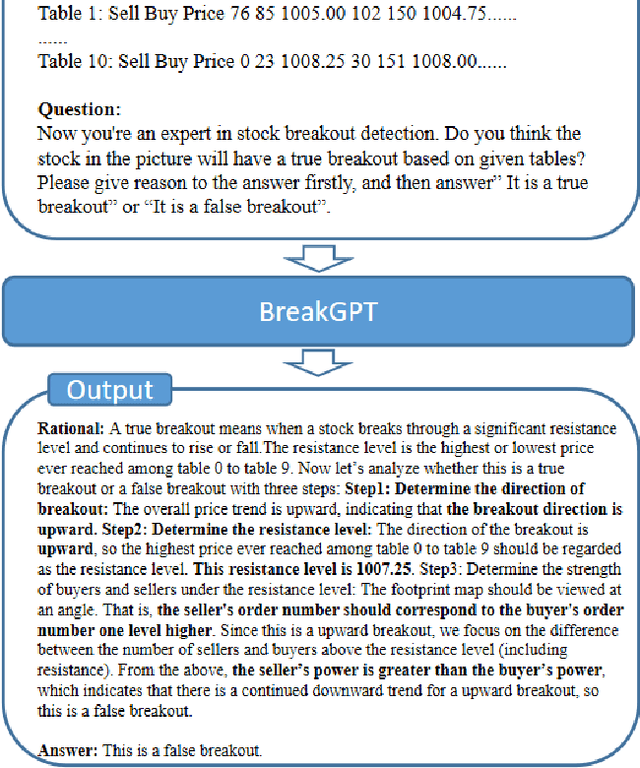
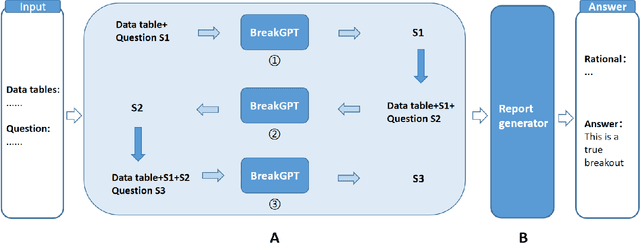

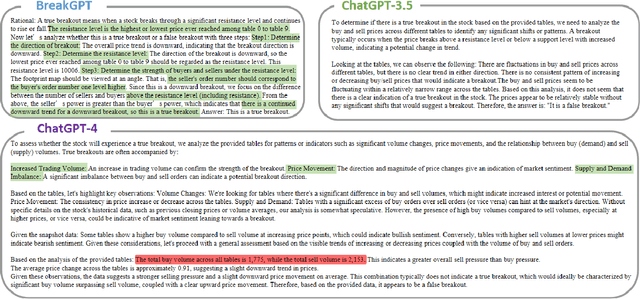
Abstract:Trading range breakout (TRB) is a key method in the technical analysis of financial trading, widely employed by traders in financial markets such as stocks, futures, and foreign exchange. However, distinguishing between true and false breakout and providing the correct rationale cause significant challenges to investors. Recently, large language models have achieved success in various downstream applications, but their effectiveness in the domain of financial breakout detection has been subpar. The reason is that the unique data and specific knowledge are required in breakout detection. To address these issues, we introduce BreakGPT, the first large language model for financial breakout detection. Furthermore, we have developed a novel framework for large language models, namely multi-stage structure, effectively reducing mistakes in downstream applications. Experimental results indicate that compared to GPT-3.5, BreakGPT improves the accuracy of answers and rational by 44%, with the multi-stage structure contributing 17.6% to the improvement. Additionally, it outperforms ChatGPT-4 by 42.07%. Our Code is publicly available: https://github.com/Neviim96/BreakGPT
PillarNeSt: Embracing Backbone Scaling and Pretraining for Pillar-based 3D Object Detection
Nov 29, 2023Abstract:This paper shows the effectiveness of 2D backbone scaling and pretraining for pillar-based 3D object detectors. Pillar-based methods mainly employ randomly initialized 2D convolution neural network (ConvNet) for feature extraction and fail to enjoy the benefits from the backbone scaling and pretraining in the image domain. To show the scaling-up capacity in point clouds, we introduce the dense ConvNet pretrained on large-scale image datasets (e.g., ImageNet) as the 2D backbone of pillar-based detectors. The ConvNets are adaptively designed based on the model size according to the specific features of point clouds, such as sparsity and irregularity. Equipped with the pretrained ConvNets, our proposed pillar-based detector, termed PillarNeSt, outperforms the existing 3D object detectors by a large margin on the nuScenes and Argoversev2 datasets. Our code shall be released upon acceptance.
GMM: Delving into Gradient Aware and Model Perceive Depth Mining for Monocular 3D Detection
Jun 30, 2023
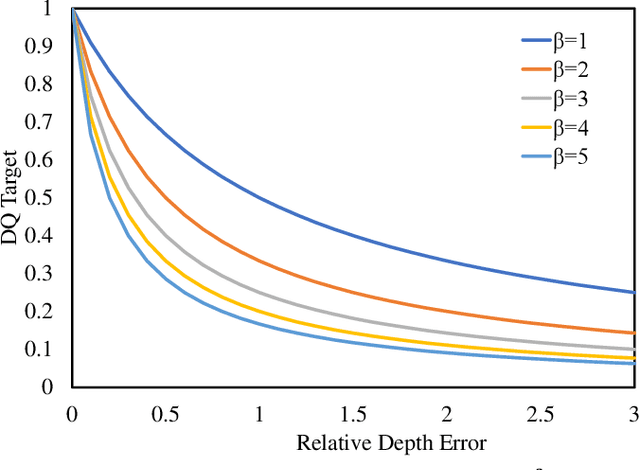
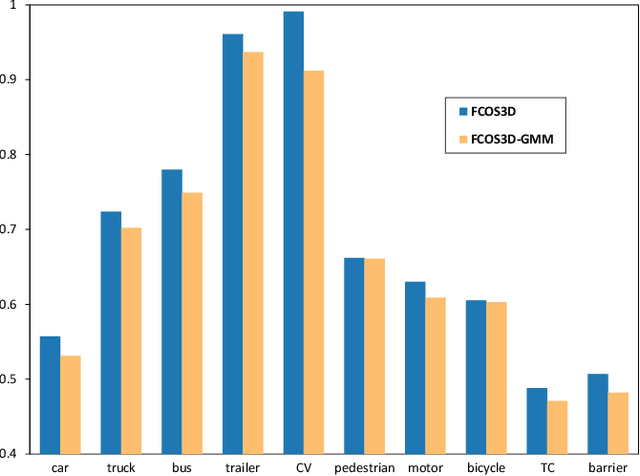
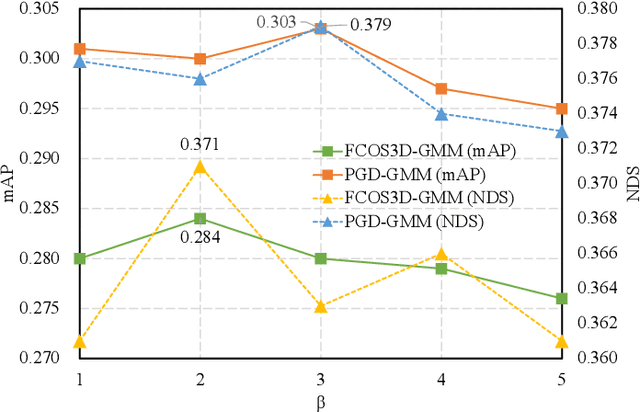
Abstract:Depth perception is a crucial component of monoc-ular 3D detection tasks that typically involve ill-posed problems. In light of the success of sample mining techniques in 2D object detection, we propose a simple yet effective mining strategy for improving depth perception in 3D object detection. Concretely, we introduce a plain metric to evaluate the quality of depth predictions, which chooses the mined sample for the model. Moreover, we propose a Gradient-aware and Model-perceive Mining strategy (GMM) for depth learning, which exploits the predicted depth quality for better depth learning through easy mining. GMM is a general strategy that can be readily applied to several state-of-the-art monocular 3D detectors, improving the accuracy of depth prediction. Extensive experiments on the nuScenes dataset demonstrate that the proposed methods significantly improve the performance of 3D object detection while outperforming other state-of-the-art sample mining techniques by a considerable margin. On the nuScenes benchmark, GMM achieved the state-of-the-art (42.1% mAP and 47.3% NDS) performance in monocular object detection.
Vision Learners Meet Web Image-Text Pairs
Jan 17, 2023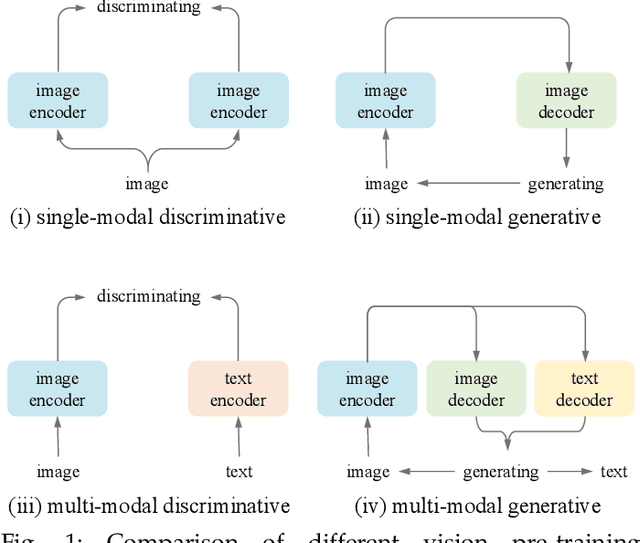
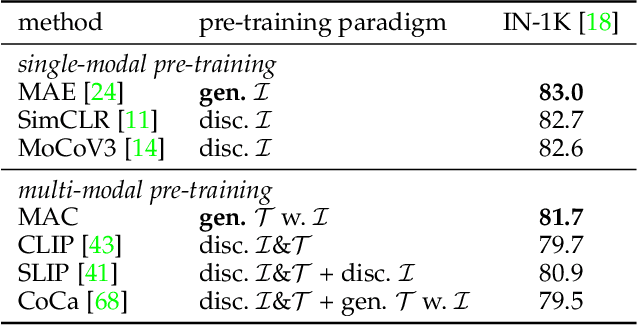

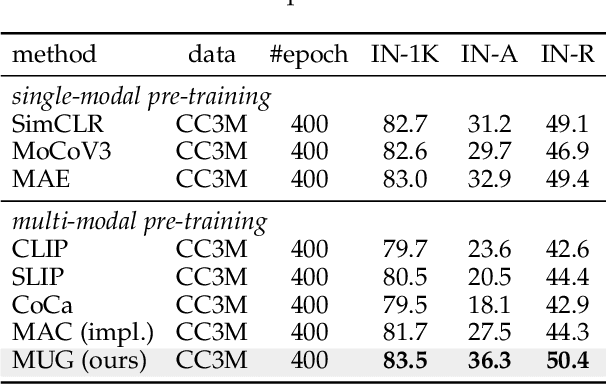
Abstract:Most recent self-supervised learning~(SSL) methods are pre-trained on the well-curated ImageNet-1K dataset. In this work, we consider SSL pre-training on noisy web image-text paired data due to the excellent scalability of web data. First, we conduct a benchmark study of representative SSL pre-training methods on large-scale web data in a fair condition. Methods include single-modal ones such as MAE and multi-modal ones such as CLIP. We observe that multi-modal methods cannot outperform single-modal ones on vision transfer learning tasks. We derive an information-theoretical view to explain the benchmarking results, which provides insights into designing novel vision learners. Inspired by the above explorations, we present a visual representation pre-training method, MUlti-modal Generator~(MUG), for scalable web image-text data. MUG achieves state-of-the-art transferring performances on a variety of tasks and shows promising scaling behavior. Models and codes will be made public. Demo available at https://huggingface.co/spaces/tennant/MUG_caption
 Add to Chrome
Add to Chrome Add to Firefox
Add to Firefox Add to Edge
Add to Edge